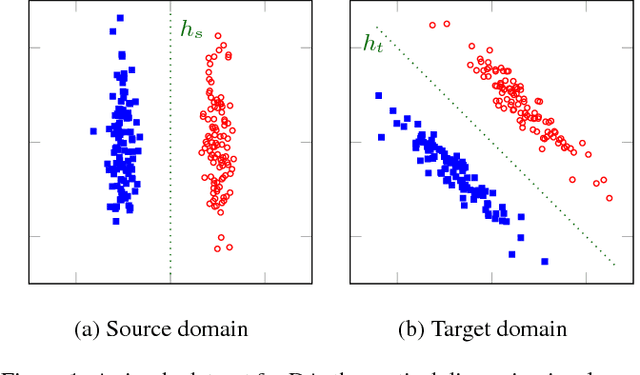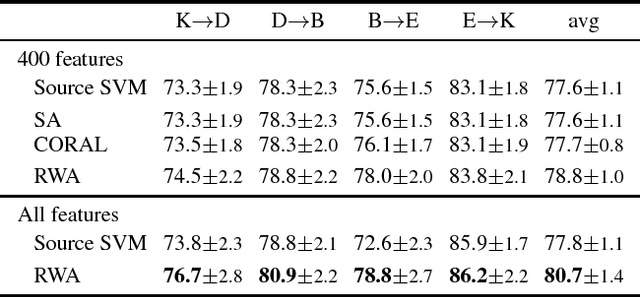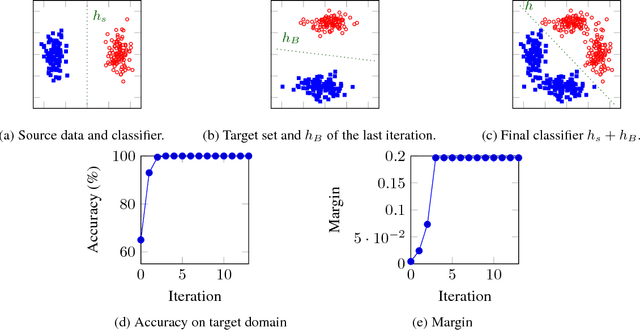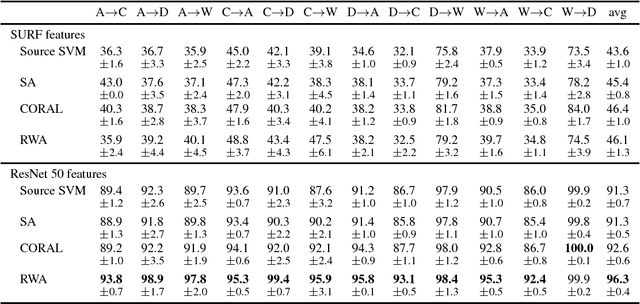Unsupervised Domain Adaptation with Random Walks on Target Labelings
Paper and Code
Mar 20, 2018



Unsupervised Domain Adaptation (DA) is used to automatize the task of labeling data: an unlabeled dataset (target) is annotated using a labeled dataset (source) from a related domain. We cast domain adaptation as the problem of finding stable labels for target examples. A new definition of label stability is proposed, motivated by a generalization error bound for large margin linear classifiers: a target labeling is stable when, with high probability, a classifier trained on a random subsample of the target with that labeling yields the same labeling. We find stable labelings using a random walk on a directed graph with transition probabilities based on labeling stability. The majority vote of those labelings visited by the walk yields a stable label for each target example. The resulting domain adaptation algorithm is strikingly easy to implement and apply: It does not rely on data transformations, which are in general computational prohibitive in the presence of many input features, and does not need to access the source data, which is advantageous when data sharing is restricted. By acting on the original feature space, our method is able to take full advantage of deep features from external pre-trained neural networks, as demonstrated by the results of our experiments.
 Add to Chrome
Add to Chrome Add to Firefox
Add to Firefox Add to Edge
Add to Edge